Abstract
Four hundred and eighty-six textile workers in three cotton mills and one wool/synthetic mill were studied for symptoms and functional effects of workroom exposure to dust. Byssinosis was found in 5.7% of 386 cotton workers, with an apparent threshold level of 0.5 mg cotton dust/m3 of air. Mean post-shift functional declines were greater in workers exposed to greater than or equal to 0.2 mg/m3. Workers with byssinosis were unequally distributed, however, with respect to job category and mill; and these variables, rather than current dust exposure levels, accounted for the observed distribution of byssinosis prevalence rates. Variation in biological potency of different samples of cotton dust could be responsible for 'mill effect', the residual variation in response rates by mill after controlling for variation due to dust exposure. A number of other potential influencing variables that are likely to be distributed unequally by mill should also be considered. Mill effect should be assessed in large-scale studies of byssinosis, most of which have analysed biological response rates by combining mill and other variables to examine first-order effects of dust dosage. In such analyses, much of the observed variability may be due to factors other than dust dosage.
Full text
PDF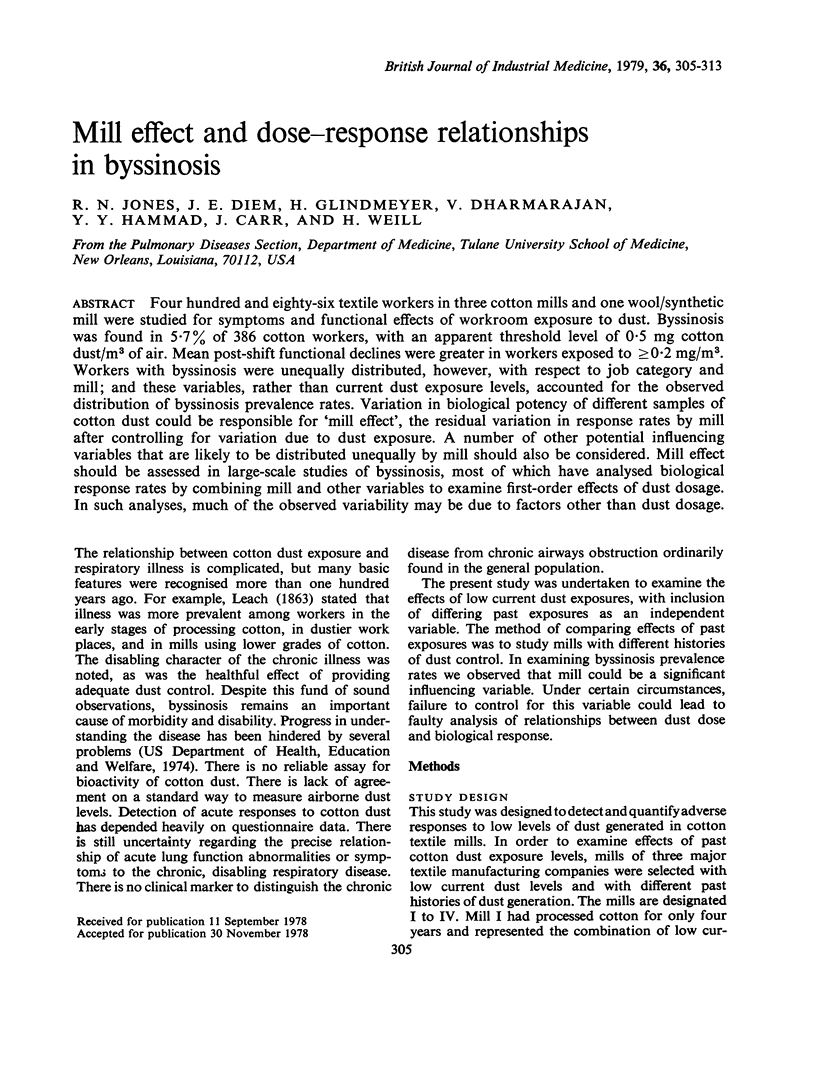
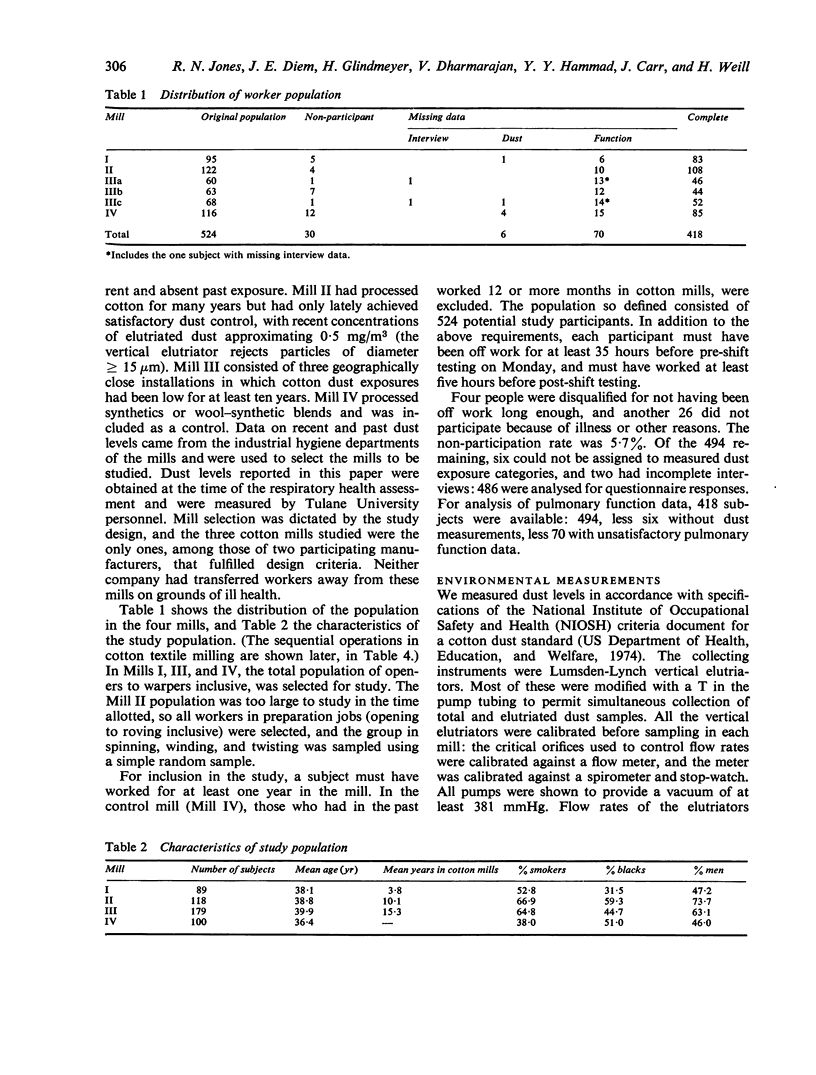
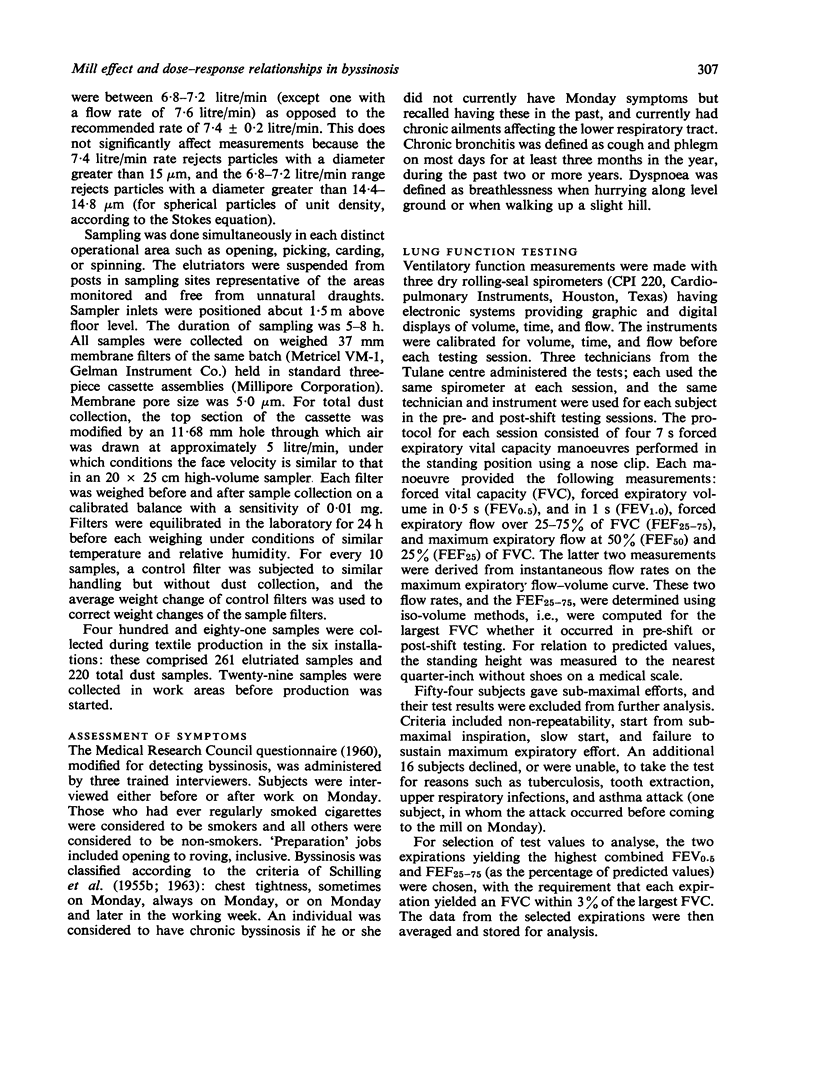
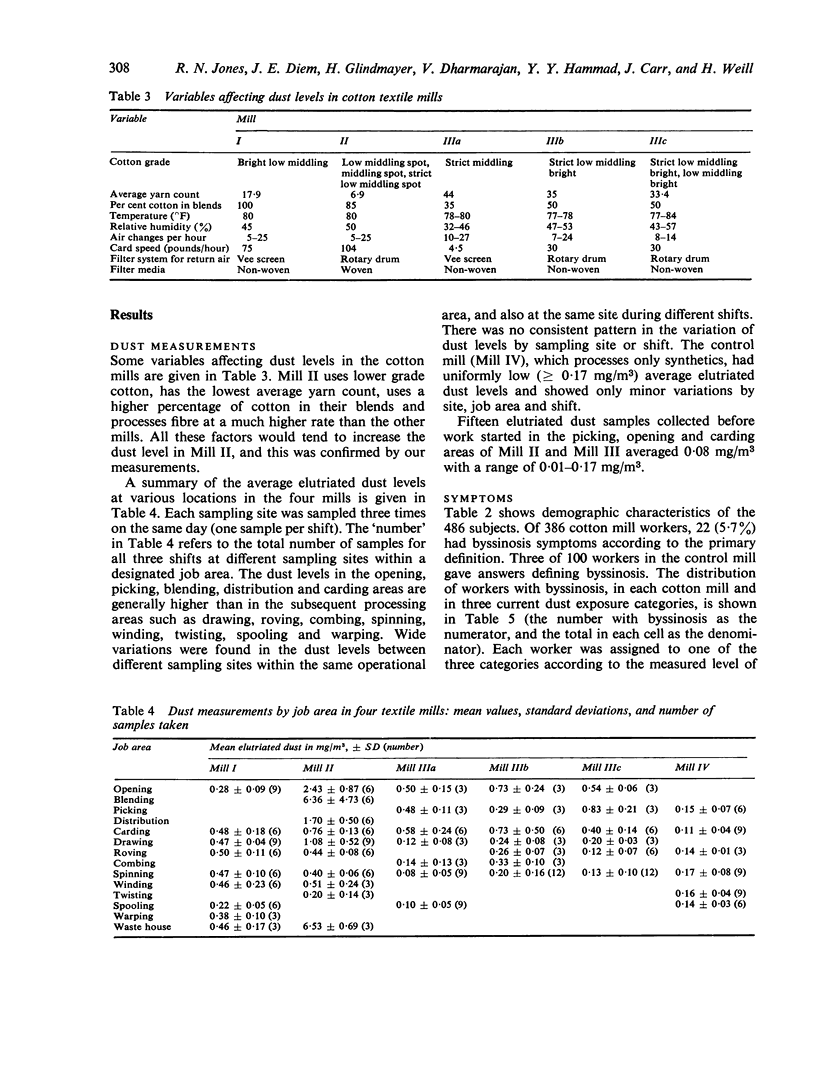
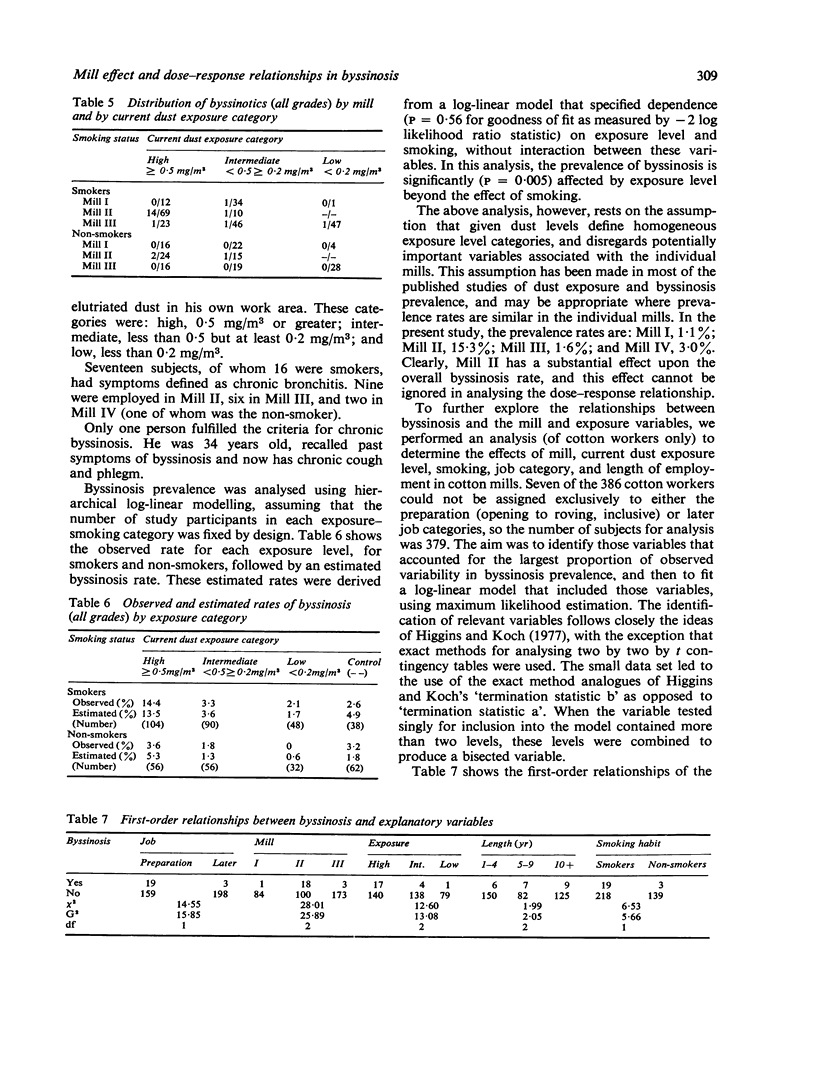
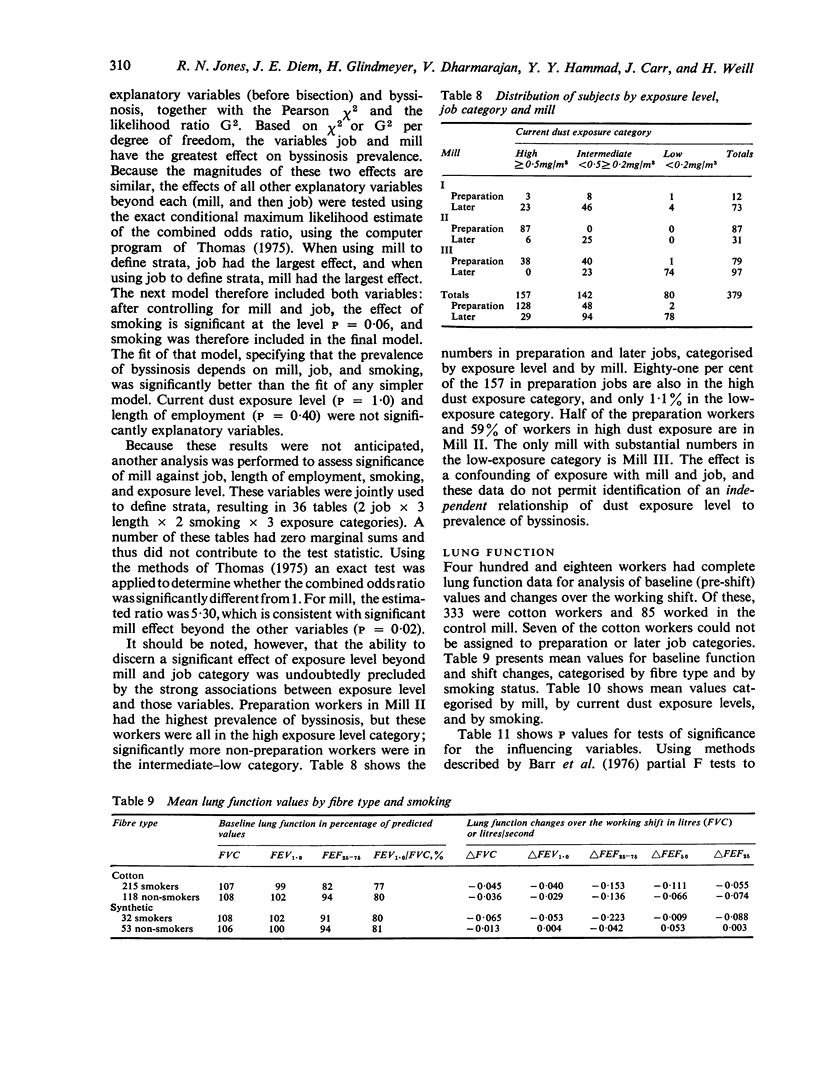
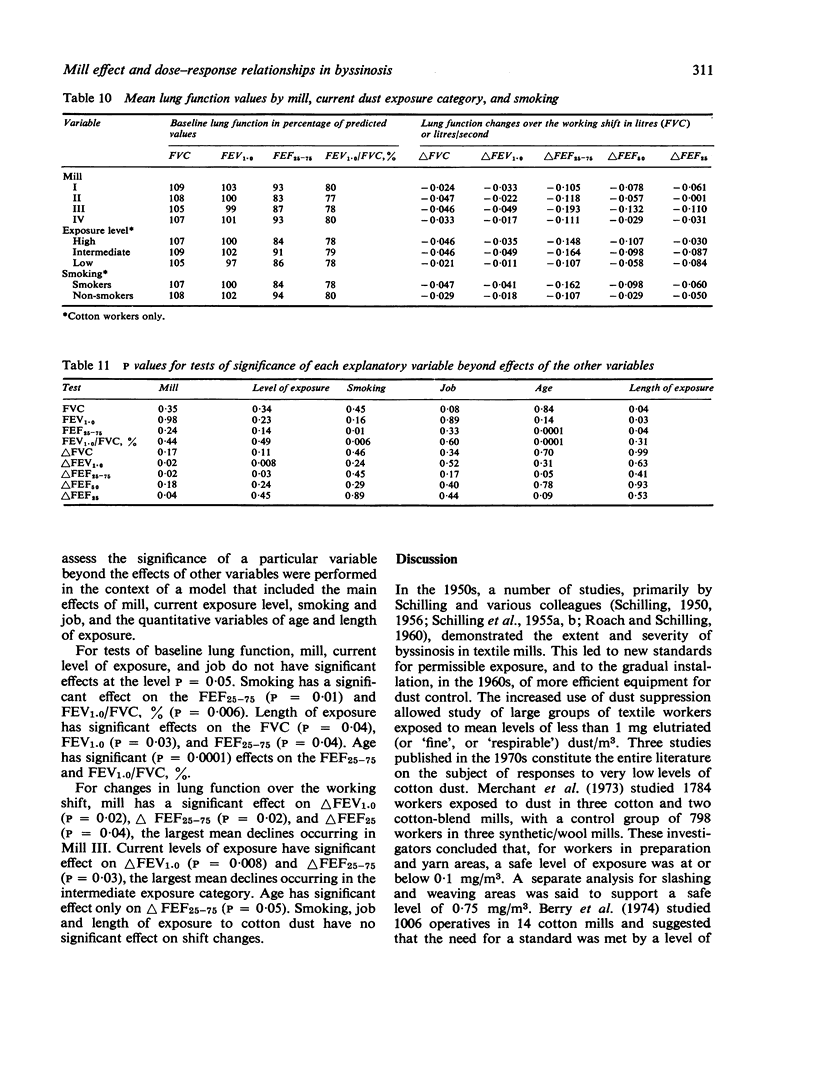
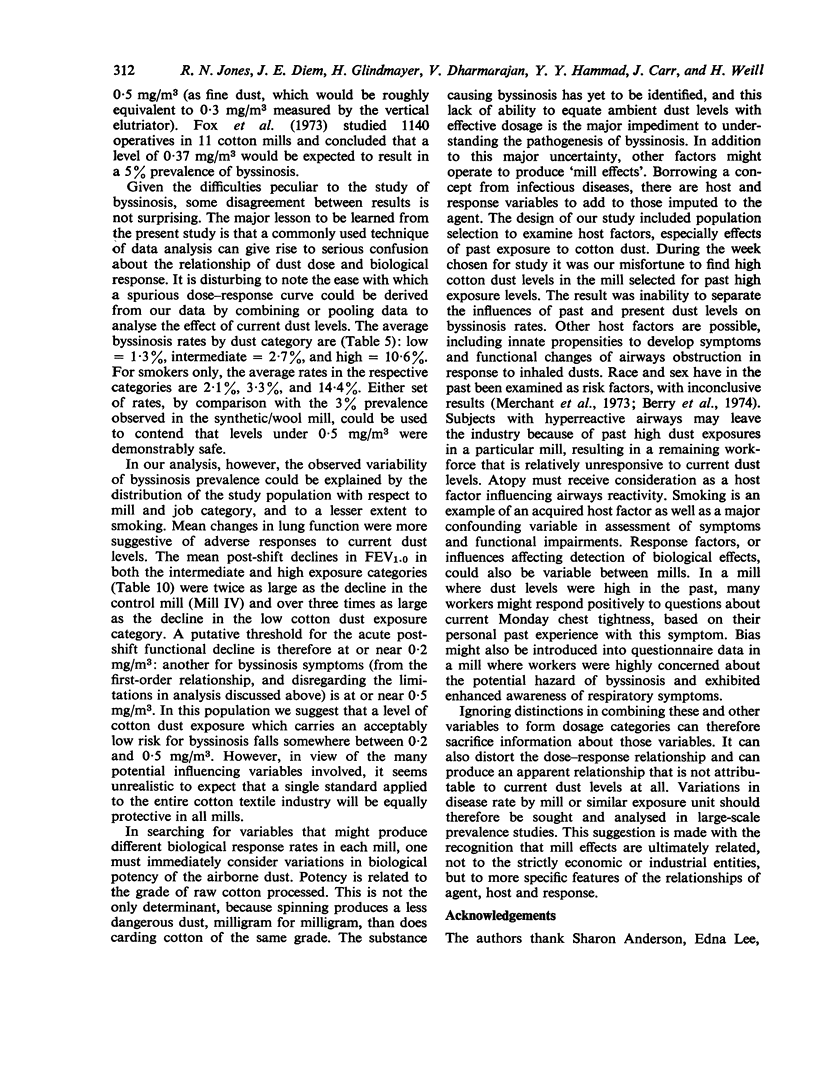
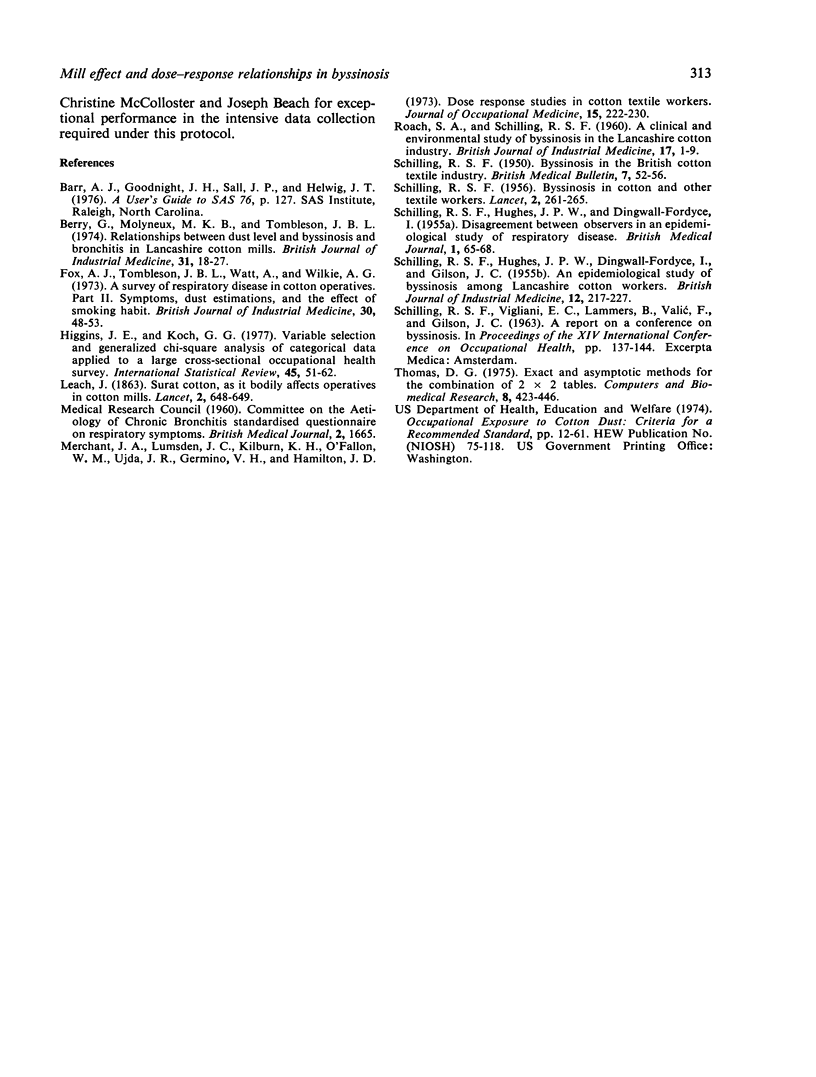
Selected References
These references are in PubMed. This may not be the complete list of references from this article.
- Berry G., Molyneux M. K., Tombleson J. B. Relationship between dust level and byssinoiss and bronchitis in Lancashire cotton mills. Br J Ind Med. 1974 Jan;31(1):18–27. doi: 10.1136/oem.31.1.18. [DOI] [PMC free article] [PubMed] [Google Scholar]
- Fox A. J., Tombleson J. B., Watt A., Wilkie A. G. A survey of respiratory disease in cotton operatives. II. Symptoms, dust estimations, and the effect of smoking habit. Br J Ind Med. 1973 Jan;30(1):48–53. doi: 10.1136/oem.30.1.48. [DOI] [PMC free article] [PubMed] [Google Scholar]
- ROACH S. A., SCHILLING R. S. A clinical and environmental study of byssinosis in the Lancashire cotton industry. Br J Ind Med. 1960 Jan;17:1–9. doi: 10.1136/oem.17.1.1. [DOI] [PMC free article] [PubMed] [Google Scholar]
- SCHILLING R. S. F. Byssinosis in the British cotton textile industry. Br Med Bull. 1950;7(1-2):52–56. doi: 10.1093/oxfordjournals.bmb.a073798. [DOI] [PubMed] [Google Scholar]
- SCHILLING R. S. Byssinosis in cotton and other textile workers. Lancet. 1956 Aug 11;271(6937):261–contd. doi: 10.1016/s0140-6736(56)92077-3. [DOI] [PubMed] [Google Scholar]
- SCHILLING R. S., HUGHES J. P., DINGWALL-FORDYCE I. Disagreement between observers in an epidemiological study of respiratory disease. Br Med J. 1955 Jan 8;1(4905):65–68. doi: 10.1136/bmj.1.4905.65. [DOI] [PMC free article] [PubMed] [Google Scholar]
- SCHILLING R. S., HUGHES J. P., DINGWALL-FORDYCE I., GILSON J. C. An epidemiological study of byssinosis among Lancashire cotton workers. Br J Ind Med. 1955 Jul;12(3):217–227. doi: 10.1136/oem.12.3.217. [DOI] [PMC free article] [PubMed] [Google Scholar]
- Thomas D. G. Exact and asymptotic methods for the combination of 2 times 2 tables. Comput Biomed Res. 1975 Oct;8(5):423–446. doi: 10.1016/0010-4809(75)90048-8. [DOI] [PubMed] [Google Scholar]


